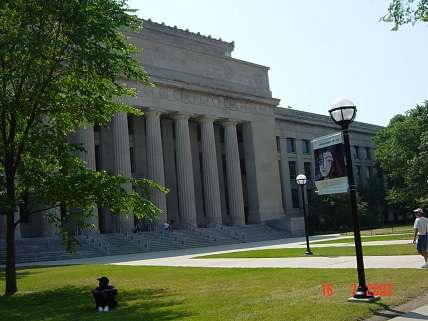Professor: Epidemic of Campus Sexual Assault at UMich… Has Been Shrinking For a Decade
Sexual assault at U-M has declined notably and in line with national statistics, casting doubt on the left's characterization of the problem as an "epidemic."


Over at the American Enterprise Institute's blog, AEI scholar and professor of economics Mark Perry crunches the numbers on instances of sexual assault at the main University of Michigan campus (Perry teaches at the sister campus in Flint).
His determination? Sexual assault at U-M has declined notably and in line with national statistics, casting doubt on the left's characterization of the problem as an "epidemic." From the blog:
There's been a lot of attention paid recently to the issue of "campus sexual assaults" and some of the media including the Washington Post and MSNBC have referred to it as an "epidemic." Doesn't the term "epidemic" suggest that there is a widespread and growing number of campus sexual assaults? If so, the crime data from at least one major college campus — the University of Michigan — don't support the term "epidemic" and in fact suggest the exact opposite – a declining trend in sexual assaults, both on and off campus, and for assaults reported to both police and university offices.
The chart above shows the annual number of sexual assaults at the University of Michigan-Ann Arbor from their annual crimes reports, like this most recent one. It should be noted that the UM crime reports include sexual assaults that took place: a) on-campus, b) off campus (including out of state) and c) on public property. Further, it includes sexual assaults reported to: a) the University of Michigan Campus Police Department, b) other police departments and c) non-police organizations like the UM Sexual Assault Prevention and Awareness Center. Therefore, it's a pretty comprehensive report that covers off-campus sexual assaults andassaults not reported to campus police, but to another police department or to a university office or official – in contrast to some universities that apparently only report sexual assaults on campus and only to the campus police.
As the chart above shows, the number of "campus" sexual assaults at UM has been trending downward for the last decade, and in 2012 (most recent year available) the number of sexual assaults (34) was about half the numbers in 2004 (64), 2005 (65) and 2006 (65).
Perry is keenly aware that U-M is just one school—maybe sexual assault has declined in Ann Arbor, but nowhere else. However, the survey most commonly cited by those who insist that sexual assault is a rising epidemic was conducted at just two campuses, he notes:
I realize that this is just one campus, and I'll research others as time allows (there is no central database for campus crime reports, each year's report has to be accessed individually), but how could that trend at UM possibly be described as an "epidemic of sexual assaults on college campuses." Also, it could be noted that the "1-in-5 women are sexually assaulted while in college" was based on a survey of students at only two universities, and extrapolated to the entire country.
Sexual assault is notoriously underreported, and it's certainly not wrong for universities to work toward an even greater reduction of rape. But the trend in the data suggests people should be optimistic that improvement is possible—because it's already happening—rather than pessimistic that things are getting worse.
Hat tip: The College Fix


Show Comments (28)